What is Nagasaki Champon Ramen?
Nagasaki Champon (長崎ちゃんぽん) is considered the soul food of Nagasaki City, located in Nagasaki Prefecture on the island of Kyushu, Japan. The ingredients include pork, seafood, and a variety of vegetables, making it a well-balanced dish different from other ramen dishes. You can enjoy a soupy and colorful noodle dish that is served in a chicken or pork-based broth and then topped with a satisfying array of sautéed ingredients.
Nagasaki Champon is believed to be inspired by a Chinese dish from Fujian Province called “tonniishiimen” (湯肉絲麵).
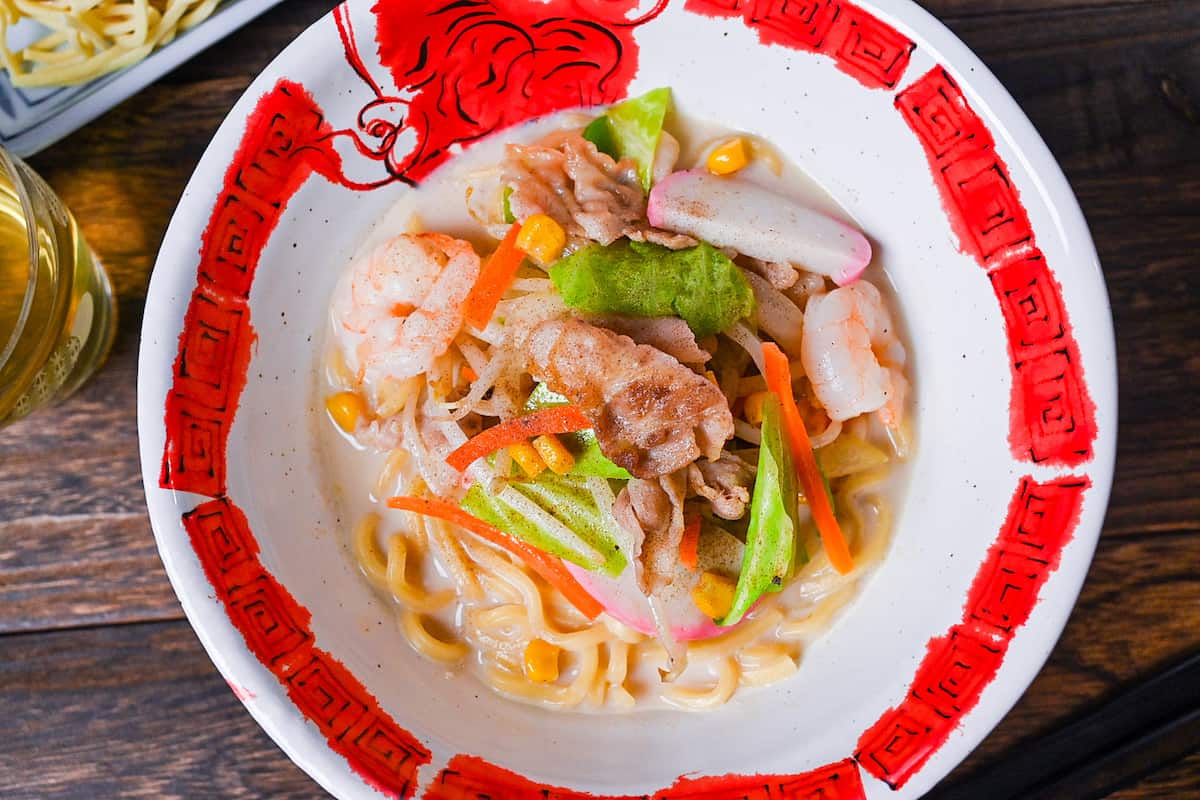
Ingredients & Substitution Ideas
- Lard or Cooking Oil: I suggest using lard for a rich flavor that goes well with the other ingredients. If you’d rather have a lighter option, a neutral cooking oil is a great choice.
- Thinly Sliced Pork Belly: This is my go-to choice, but if pork belly isn’t your thing, feel free to experiment with other pork cuts.
- Shrimp: Make sure they’re deshelled, deveined, and tailless.
- Toppings: Include a variety of yellow onion, beansprouts, green cabbage, kamaboko fish cake, sweet corn, and carrot for texture and taste. Some other ideas I didn’t use but work well are ham instead of kamaboko, and mushrooms or green beans.
- Dashi Broth: The base of your soup’s flavor. Opt for simple awase dashi, vegan dashi, or use instant dashi granules or packets for convenience.
- Milk: Whole milk adds creaminess and richness to the broth.
- Chinese-Style Chicken Bouillon Powder: This is a key ingredient in my soup base.
- Soy Sauce: For more details on choosing the right soy sauce, check out my guide on soy sauce.
- Grated Garlic & Ginger: I prefer fresh, but store-bought paste serves as a convenient and effective alternative.
- Oyster Sauce: Enhances the depth of your dish with its rich, savory taste.
- Ramen Noodles: I like to use thick noodles for Champon. If you’re up for it, making your own homemade ramen noodles is the way to go. If that’s not an option, fresh store-bought ramen noodles are a great alternative. If you’re short on time, check out my Spaghetti Ramen Hack for a creative alternative.
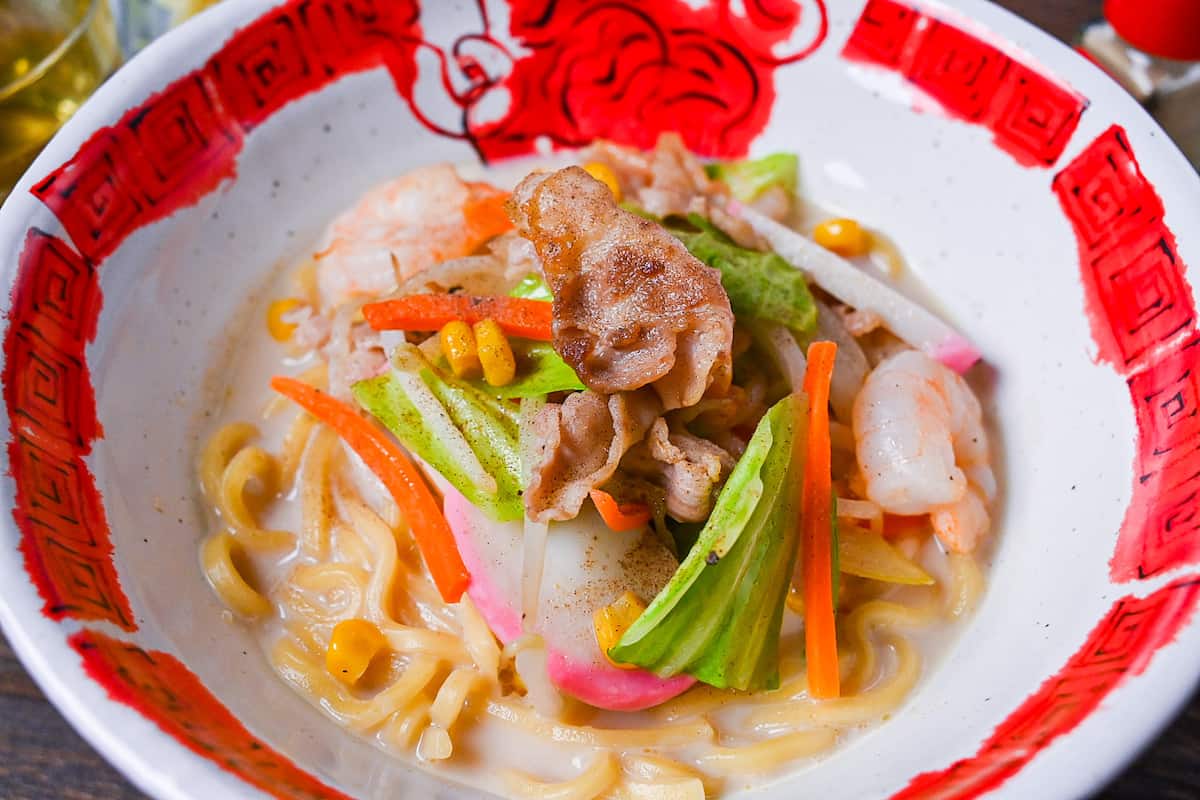
Visual Walkthrough & Tips
Here are my step-by-step instructions for how to make Nagasaki Champon at home. For ingredient quantities and simplified instructions, scroll down for the Printable Recipe Card below.
If you prefer to watch the process in action, check out my YouTube video of this recipe for a complete visual walkthrough!
Since the toppings are only going to be sautéed for a few minutes, I recommend cutting them thin and small.
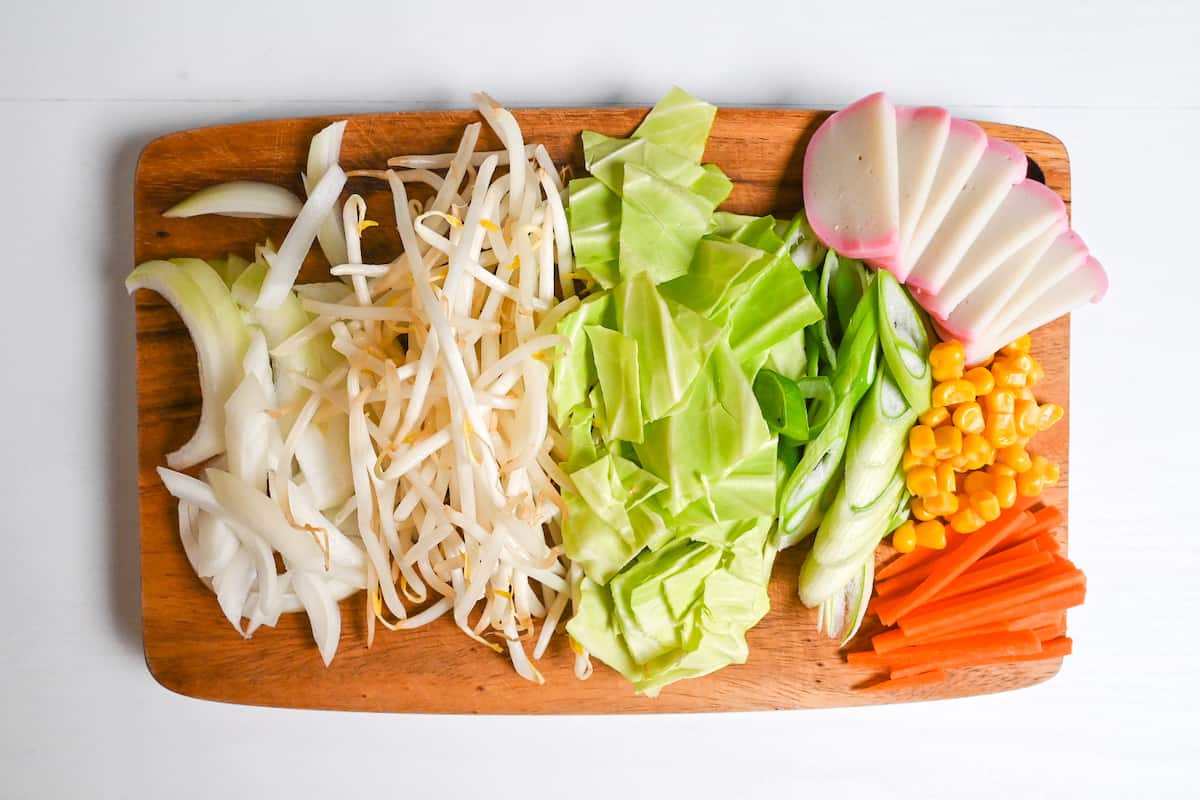
From left to right, I prepare the vegetables and kamaboko as follows:
- Onion – thinly sliced
- Beansprouts – as they are
- Cabbage – roughly cut
- Kamaboko (pink and white fish cake) – thinly slices
- Japanese leek (naganegi) – (optional) thin, diagonal slices
- Sweetcorn – pre-cooked from a can
- Carrot – julienned
Of course, you don’t have to cut them exactly the same or even use the same ingredients; this is just a guide. Some substitutes include mushrooms, green beans or ham.
Start by heating a wok or large frying pan on medium and once it’s hot, add lard or cooking oil. Add your meat first and seal on both sides. I used thinly sliced pork belly. Once it’s sealed, add the shrimp (or seafood of your choice) and sprinkle with a generous pinch of salt and pepper.
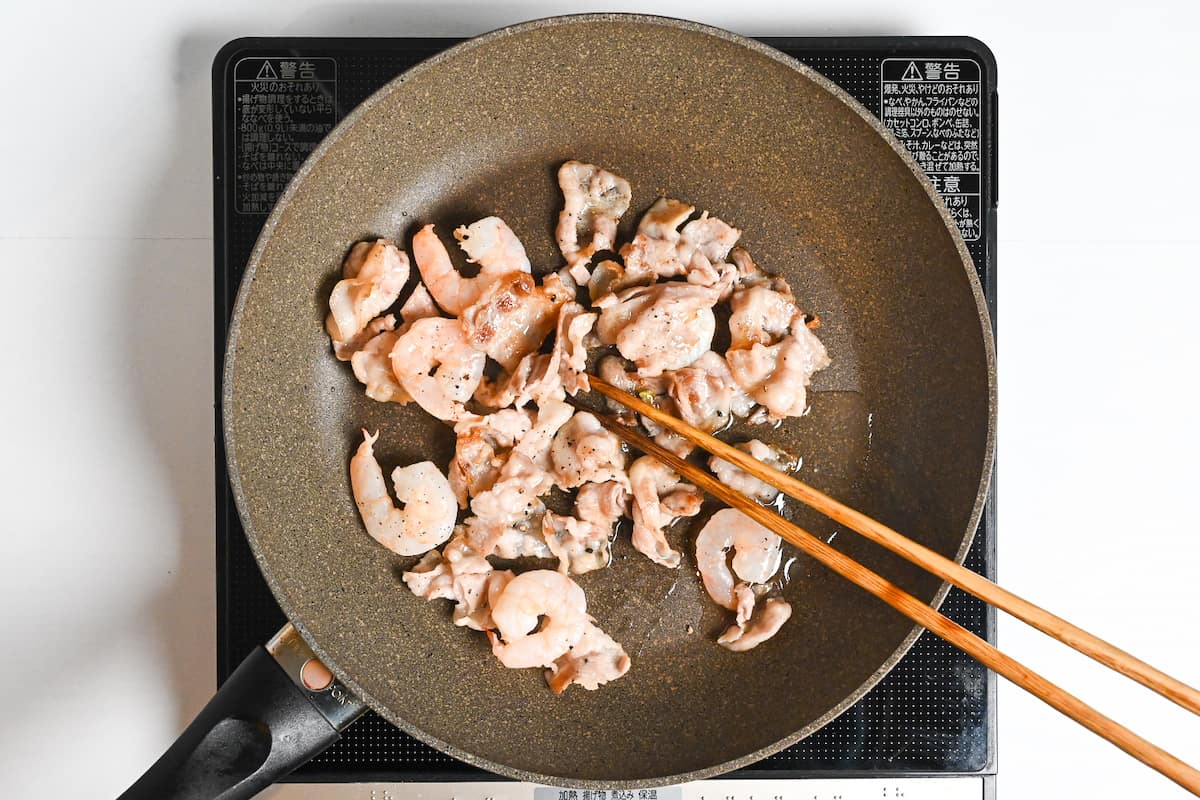
Once the meat and seafood are cooked, add the vegetables and kamaboko altogether.
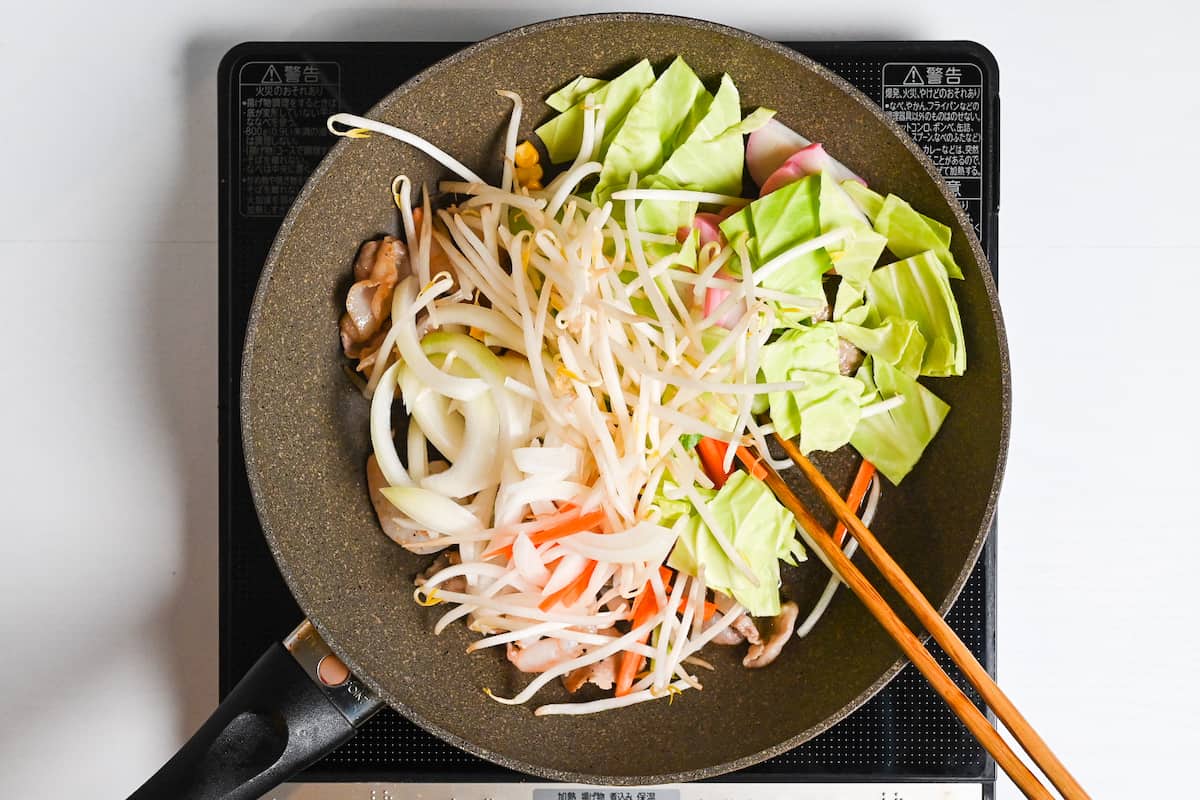
If there are certain vegetables that you prefer to be a bit softer (such as onion or carrot), you can add those first to fry them for a bit longer. However, one of the appeals of this dish is the crunchy and refreshing toppings so be careful not to overcook!
Stir fry everything for a few minutes until it looks like this:
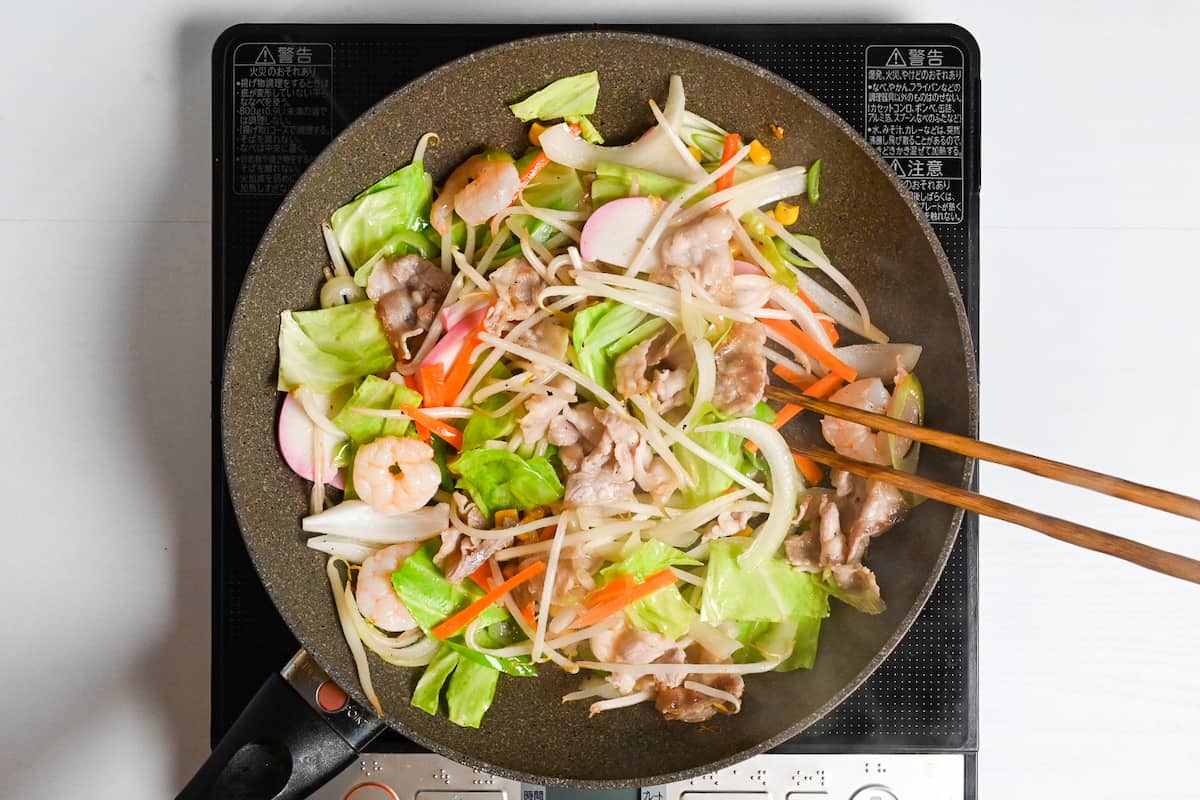
Once cooked, remove from the heat and set aside for later.
To make the broth, add the dashi, soy sauce, grated garlic, grated ginger and oyster sauce to a saucepan. Heat on medium and once warm, add the Chinese chicken bouillon granules and stir.
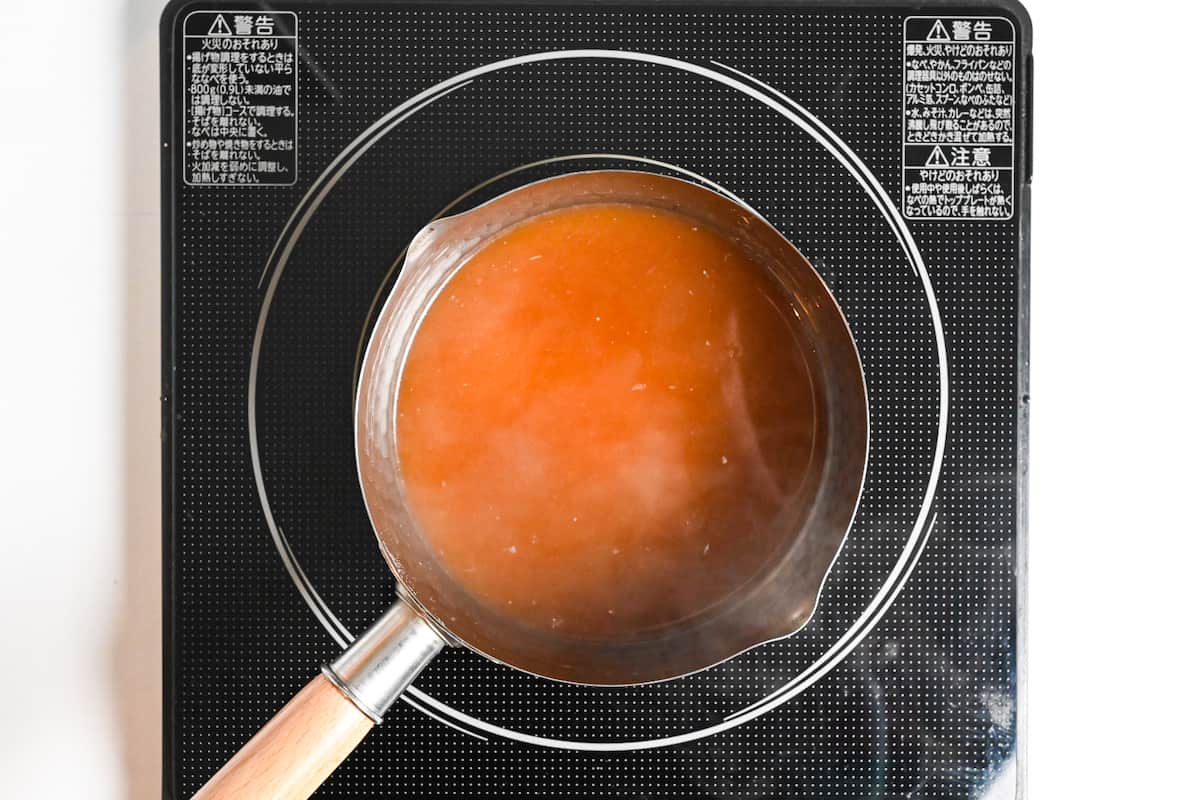
When the chicken bouillon has dissolved into the liquid, turn off the heat and add the whole milk.
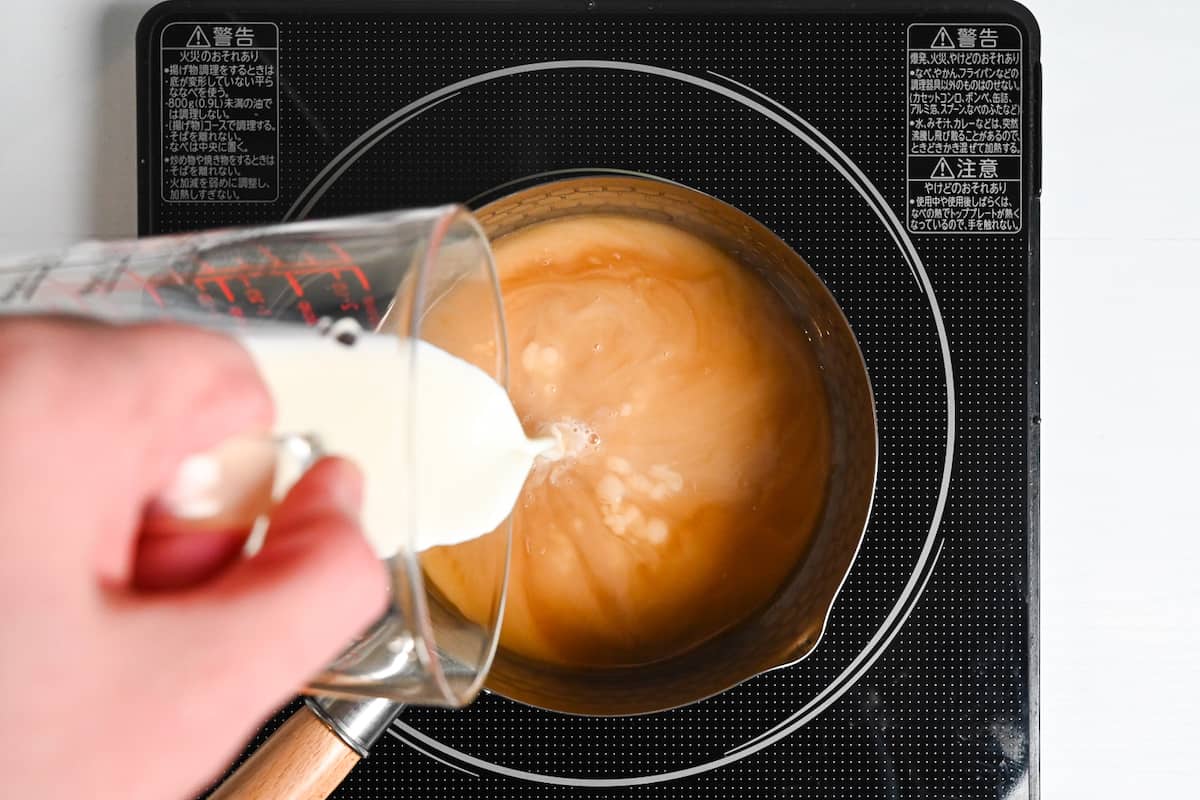
To prevent the milk from curdling in the broth, heat just before serving and be careful not to let it boil. Alternatively, heat it on low while the noodles are cooking and turn off the heat if you start to see small bubbles appear around the edges.
Bring a pot of water to a rolling boil and add your ramen noodles. Boil according to the instructions on the packaging.
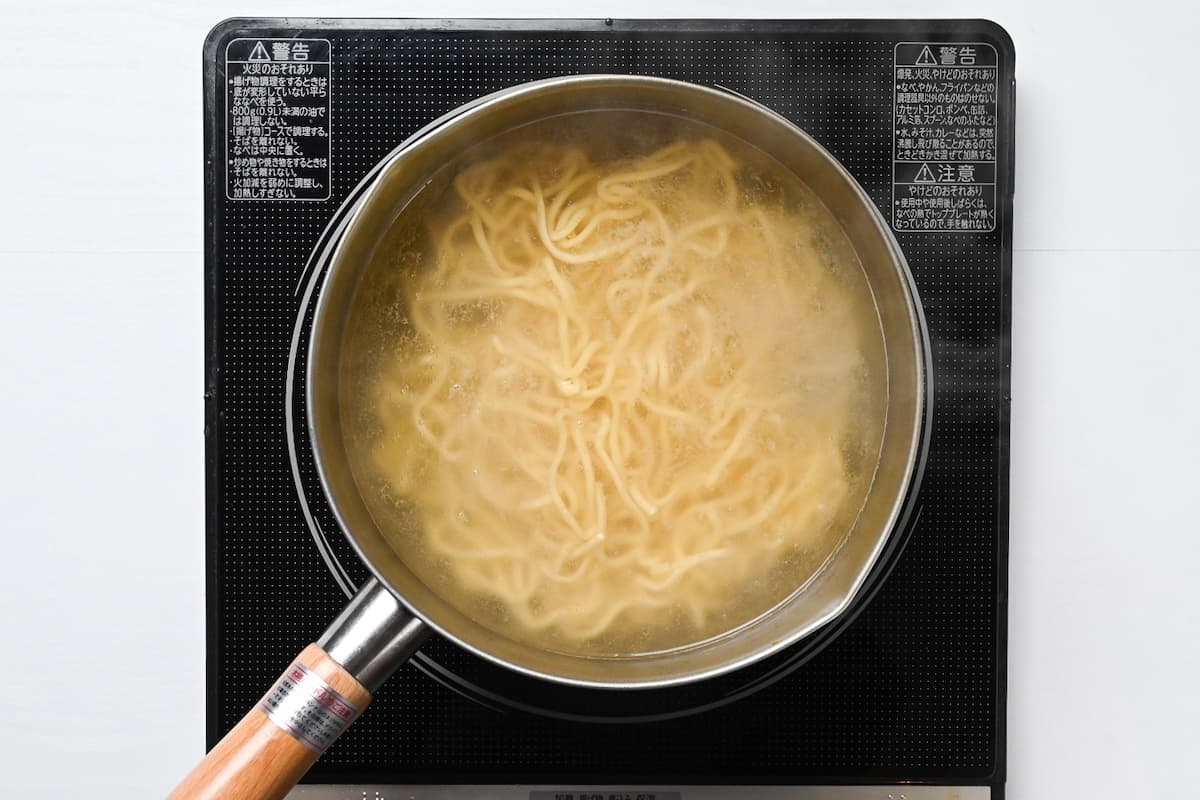
When the noodles only have a few minutes left, heat up the broth.
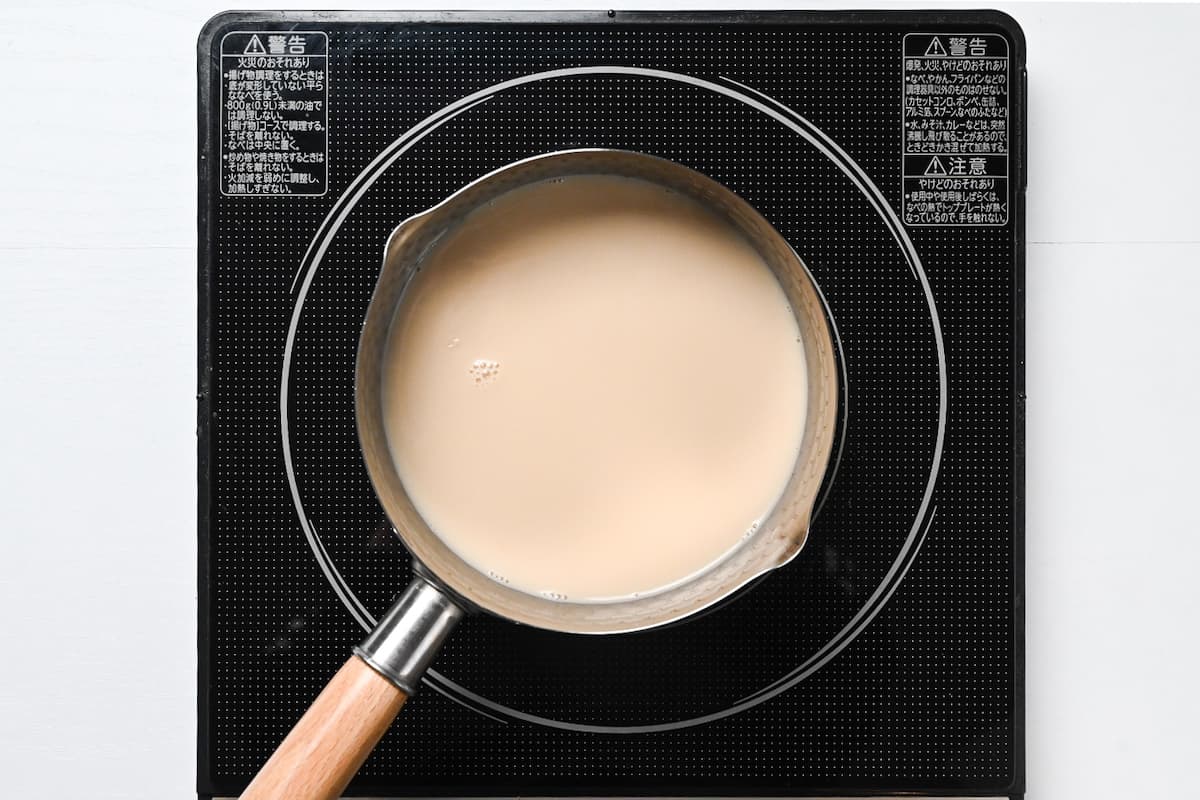
Because the broth contains milk, it’s prone to curdling. Be careful not to overcook or heat it up too quickly. Heat it on low to medium-low for best results and don’t let it get any hotter than 75°C (167°F). If bubbles start appearing around the edges or you start to hear bubbling, turn off the heat.
Divide the cooked ramen noodles into serving bowls.
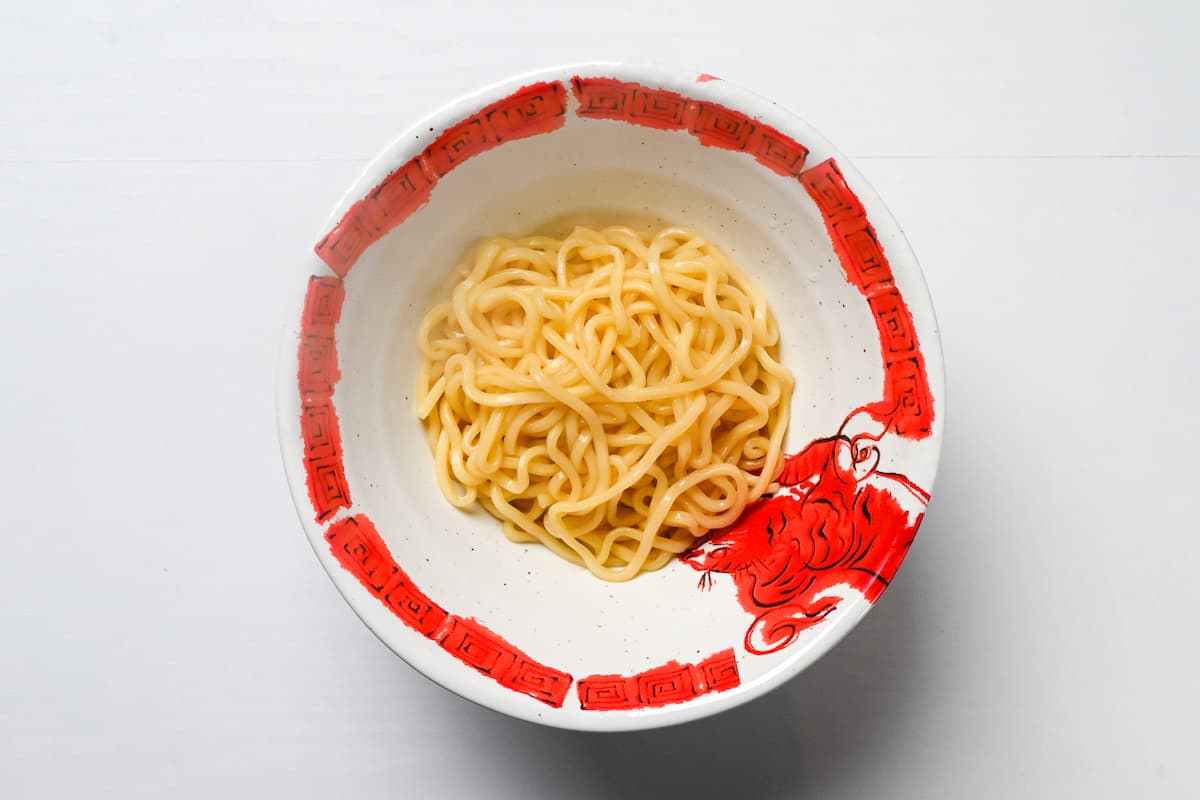
Add about 250ml of broth per person.
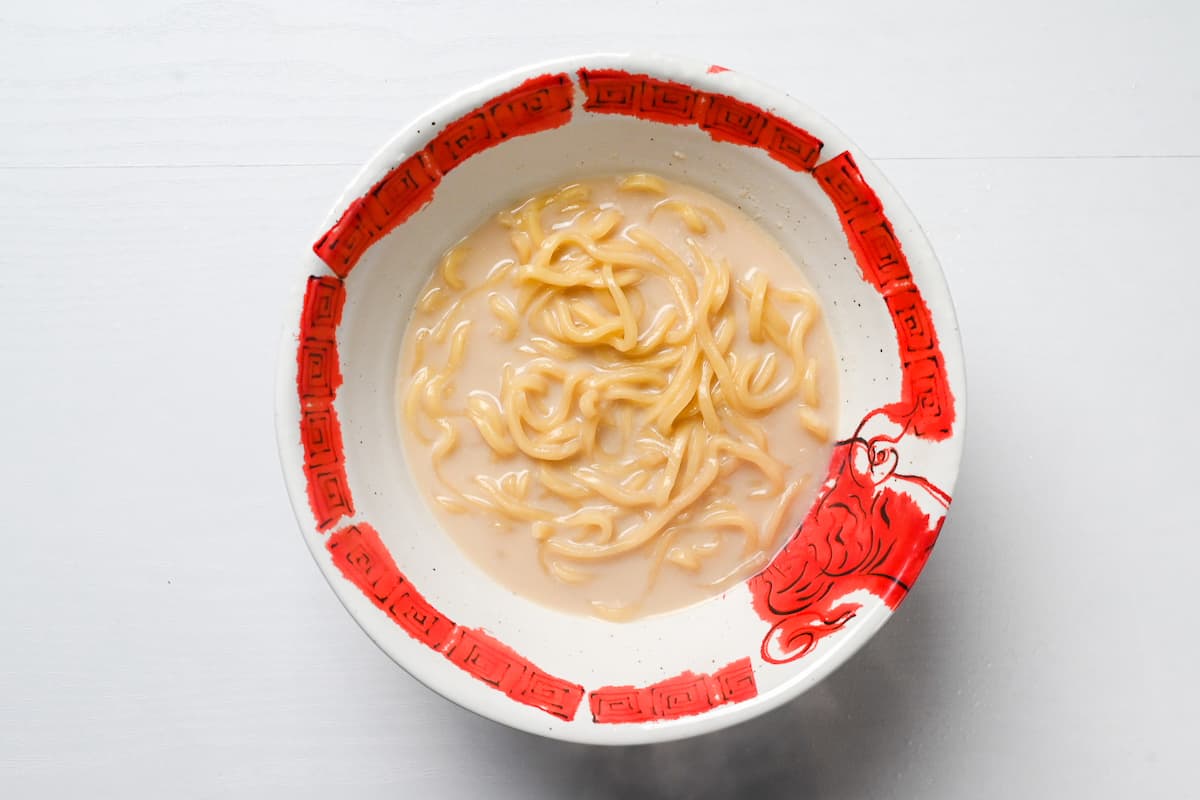
Place the meat, seafood and vegetables on top.
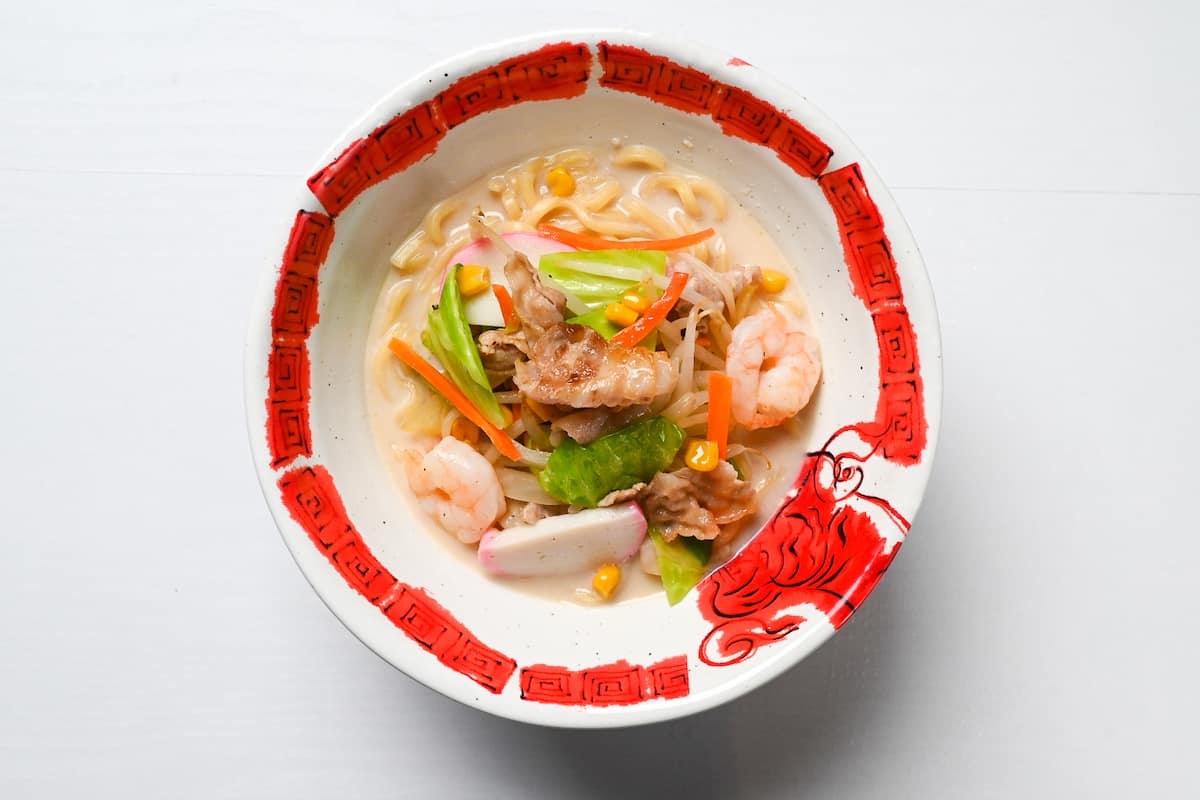
Sprinkle with white pepper and enjoy!
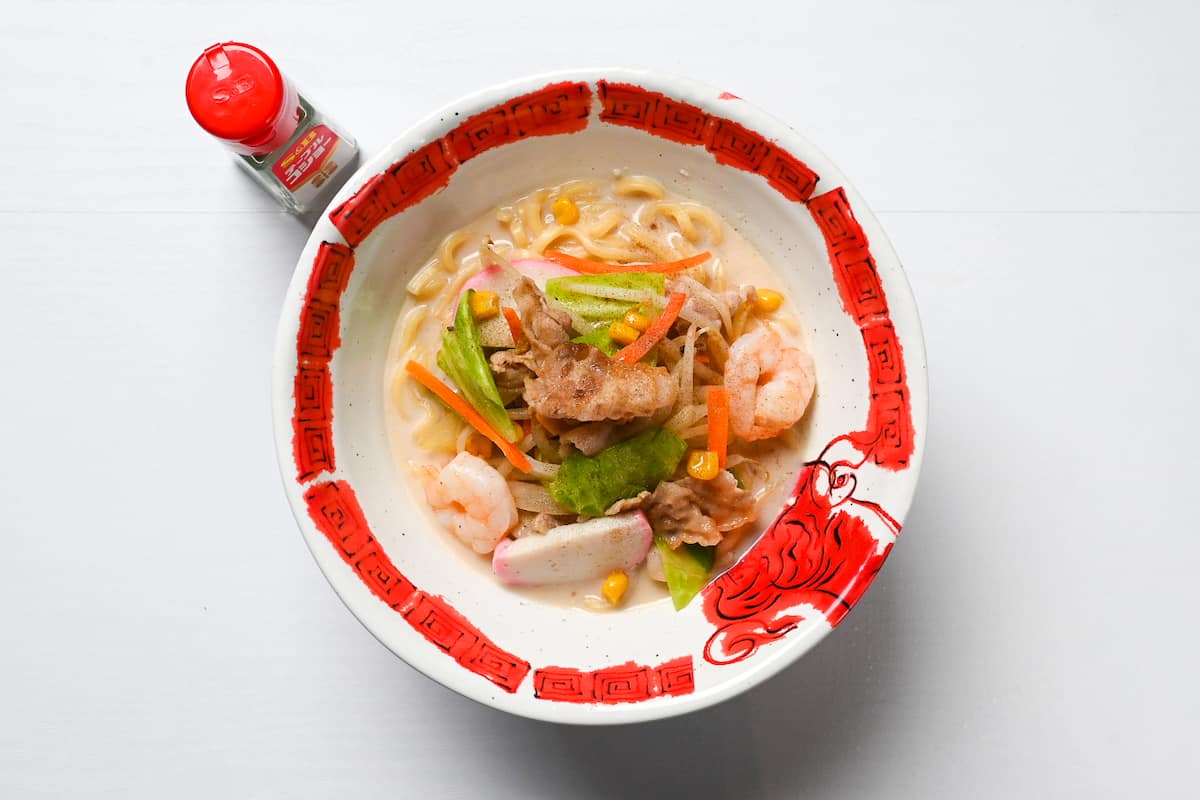
FAQ
The story goes, that champon was created by the owner of a Chinese restaurant called “Shikairou” in Nagasaki City during the mid-Meiji period (1868-1912). He invented champon to provide a cheap and nutritious meal for Chinese exchange students visiting Japan at that time.
The word “champon” means “mixture of various things,” and it represents the champon dish’s having many different kinds of vegetables.
Many people don’t realize that champon is actually an example of “chuka ryori” (中華料理), which are dishes born in Japan, but are actually inspired by Chinese cuisine. As mentioned above, champon is very different from other types of ramen dishes such as shoyu ramen or shio ramen.
At first glance, champon may give the impression of a ramen dish with a variety of ingredients, but there are several technical differences.
For example, strictly speaking, the noodles used for chanpon are different from those used for ramen (although for convenience, this recipe uses thick ramen noodles). The noodles used for champon noodles are thick and firm and are made with “touaku (唐灰汁),” which is different from the lye water used to make regular ramen noodles. While lye water is mainly composed of potassium carbonate, the main ingredient in touaku is sodium carbonate, which gives champon noodles their unique flavor and chewy texture.
In addition to the different noodles, Nagasaki Champon isn’t served with traditional ramen toppings such as chashu, ramen eggs or menma (fermented bamboo shoots). Instead, it’s topped with sautéed pork and seafood such as (prawns and octopus) and a variety of crunchy stir-fried vegetables.
Champon’s soup and noodles used to make Nagasaki champon are very distinctive.
The soup is usually pale in color and flavored with pork or chicken broth. To skip the long simmering time of making broth from scratch, I used “garasupu” Chinese chicken bouillon granules in my recipe. (You can purchase it here on Amazon.)
As for the noodles, fresh ramen noodles are best because they cook in the shortest time. Usually, the thicker variety is used (cutting blade number 16), so just use the thickest ramen noodles you can find. I recommend cooking the noodles separately to avoid making the broth starchy and thick.
Ringer Hut is a Japanese fast food restaurant that specializes in two dishes of Chinese origin from Nagasaki: Champon and Sara Udon. Established by Hamakatsu Co. in 1977, Ringer Hut became popular quickly. There are now over 550 restaurants in Japan and Taiwan, and Hamakatsu Co. also owns over 100 tonkatsu restaurants. Ringer Hut also has restaurants in Hawaii, Thailand, and Cambodia, with some in San Jose, New York, and Hong Kong having closed down.
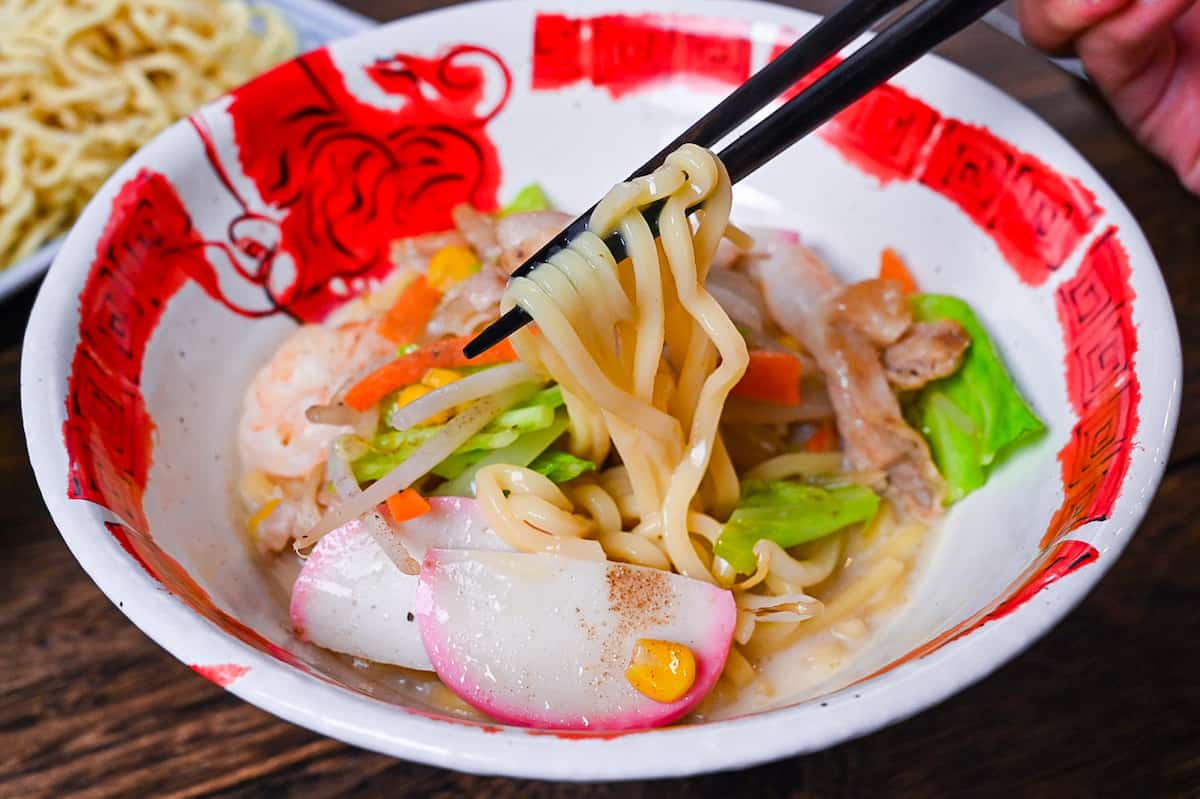
I hope you enjoy this Nagasaki Champon recipe! If you try it out, I’d really appreciate it if you could spare a moment to let me know what you thought by giving a review and star rating in the comments below. It’s also helpful to share any adjustments you made to the recipe with our other readers. Thank you!
More Ramen Recipes
- 10-Minute Cheat’s Tonkotsu Ramen (No Pork Bones Required)
- Chicken Shio Ramen (Salt Base Broth)
- 15 Minute Spicy Tsukemen (Dipping Ramen)
- Homemade Shoyu Ramen
Want more inspiration? Explore my Ramen Recipe Roundup for a carefully selected collection of tasty recipe ideas to spark your next meal!
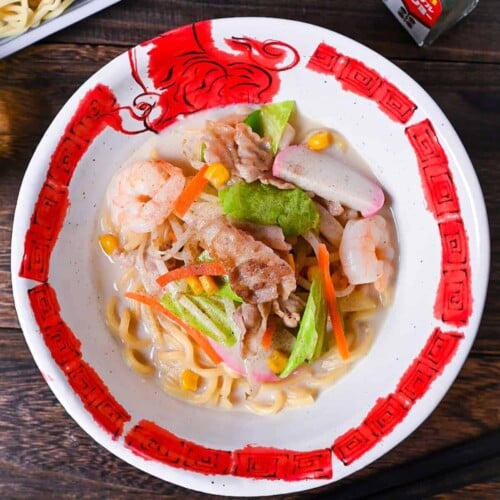
Nagasaki Champon Ramen Noodles (Ringer Hut Style)
Equipment
- Red dragon ramen bowl
- Noodle strainer
Ingredients
- 1 tsp lard or cooking oil
- 100 g thinly sliced pork belly
- 8 shrimp deshelled, deveined with tails removed
- 1 pinch salt and pepper
- 50 g onion thinly sliced
- 100 g bean sprouts
- 50 g green cabbage roughly cut
- 8 slices kamaboko fish cake kamaboko
- 20 g canned sweet corn
- 20 g carrot julienned
Broth
- 400 ml dashi stock
- 100 ml milk
- 1 tbsp Chinese-style chicken bouillon powder
- ½ tbsp Japanese soy sauce (koikuchi shoyu)
- 1 tsp grated garlic or garlic paste
- 1 tsp grated ginger root or ginger paste
- 1 tsp oyster sauce
- 2 portions ramen noodles preferably thick type
- ground white pepper sprinkle at the end, optional
Instructions
- Heat a wok or large frying pan or wok on medium and add 1 tsp lard. Once hot, fry 100 g thinly sliced pork belly until both sides are sealed and add 8 shrimp with 1 pinch salt and pepper.

- Once the pork and shrimps are cooked on the surface, add 8 slices kamaboko fish cake and 50 g onion, 100 g bean sprouts, 50 g green cabbage, 20 g canned sweet corn, and 20 g carrot together.

- Stir fry everything together until cabbage is softened and the pork and shrimps are cooked all the way through. Turn off the heat and set aside for later.

- Take a saucepan and add 400 ml dashi stock, ½ tbsp Japanese soy sauce (koikuchi shoyu), 1 tsp grated garlic, 1 tsp grated ginger root and 1 tsp oyster sauce. Heat the broth on medium. Once hot, add 1 tbsp Chinese-style chicken bouillon powder and mix.

- When the chicken bouillon has dissolved, turn off the heat and add 100 ml milk. Heat up on medium just before serving.

- Boil 2 portions ramen noodles in a separate pot according to instructions the packaging. When the ramen has 2-3 minutes left, reheat the broth. (Important: Be careful not to let the soup boil to prevent the milk curdling.)

- Once the noodles are cooked, dispose of the water and place the noodles in the serving bowls.

- Pour broth over each serving of noodles.

- Top the noodles with the stir fried meat and vegetables.

- Sprinkle with ground white pepper (optional) and enjoy!

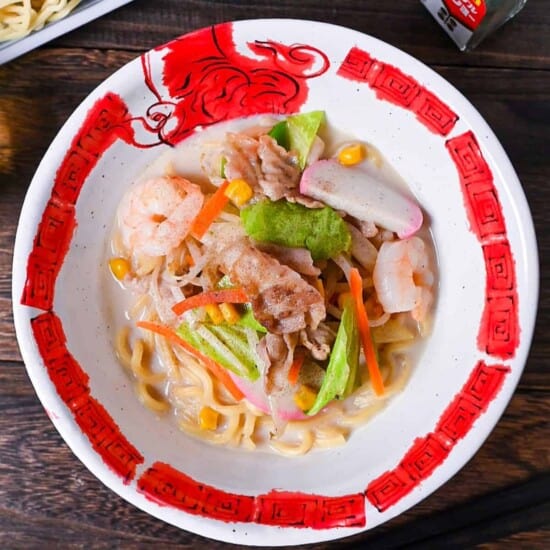




This is the way to make typical ramen (toppings, noodles, and broth all cooked separately), but this is not the correct way to make champon.What is unique about champon is that the noodles are cooked in the broth, which creates a much thicker broth due to the starch. You lose that characteristic thick broth if you don’t do that.